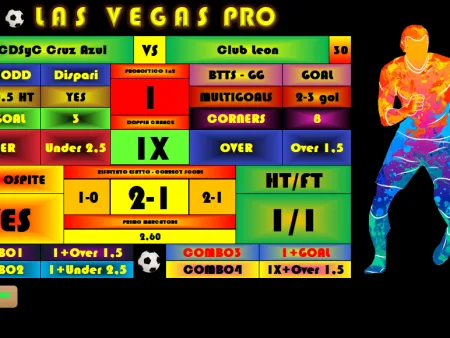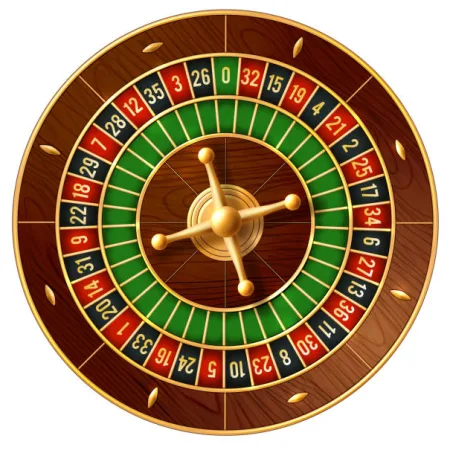Using artificial intelligence — specifically, neural networks — for predicting outcomes of football matches is becoming increasingly popular among professional bettors and data scientists. While it’s not a guaranteed way to win money, it can significantly increase your edge if done correctly.
Below you can download a script that can be used to predict football betting.
HOW to use it
1. Register with this broker: LINK
2. Also go to the neural network website, I use this LINK
4. Edit the script to fit your data, match date and team name
5. copy the edited script and send it to the neural network, after which it will give you a forecast.
An example of a prediction from a neural network
Forecast for Today’s Match: Barcelona vs Mallorca (22.04.2025)
Using a comprehensive data-driven approach that includes:
- Basic Analysis :
- Form
- Injuries
- Head-to-Head (H2H)
- Bookmaker Odds
- Advanced Calculations :
- xG Models with Machine Learning
- Monte Carlo Simulation
- Quantum Optimization to find Value Bets
- Mathematical Formulas :
Value = (Bookmaker Odds × Probability) – 1- Kelly Criterion
- Bayesian Probability Update
- Visualization Tools :
- Probability Distribution Graphs
- Heatmap showing influence of key factors on match outcome
Include a table of absent players due to injuries/suspensions
🎯 Goal:
To predict football match outcomes as accurately as possible , particularly for:
- 1X2 bets (Win/Draw/Loss)
- Over/Under goals betting (Over 2.5 / Under 2.5)
We structure our strategy into three stages .
🧠 Stage 1: Data-Based Analysis — Dynamic Performance Index (DINPI)
Purpose:
Build a Dynamic Index of Performance (DINPI) per team, incorporating:
- Team form and performance stats
- In-match variables (injuries, fatigue, weather)
- Opposition compatibility (style matchup)
Each component is scored from 0–10 , and the final index is calculated as:
1
DINPI = (Overall Form × 0.4) + (Match Variables × 0.3) + (Opposition Harmony × 0.3)
Components:
A. Overall Form & Stats
- Results of last 6 matches (Win, Draw, Loss)
- Average performance indicators:
- Attack strength
- Defensive weakness
- Home/Away win ratio (considering home advantage)
B. In-Match Variables
- Injury/Suspension status of key players
- Rotation factor in previous matches (fatigue)
- Weather and field conditions (goal probability influence)
C. Opponent Compatibility
- Historical performance against teams with similar style
- For example: How effective is a counter-attacking team against high-line defenders?
🧩 Stage 2: Strategic Modeling — Goal Potential Matrix (GPM)
Purpose:
Predict expected number of goals scored by comparing attack vs defense strengths using Poisson distribution.
Components:
A. Offensive and Defensive Strength
- xG (Expected Goals) per game
- xGA (Expected Goals Against) per game
- Differences between home/away performance
B. Target Goal Range
Use Poisson Distribution to estimate goal probabilities:
- Example: If average goals ≈ 1.8 → Calculate P(0), P(1), P(2), P(3)
- Defense of opponent slightly adjusts this value
C. Total Goal Prediction
Sum both teams’ potential:
- Barcelona (xG = 1.8) + Mallorca (xG = 1.2) ⇒ Expected total ~3 goals
This gives a baseline for Over/Under 2.5 evaluation
🎯 Stage 3: Decision Making — Selecting the Bet (Balancing Risk & Probability)
A. 1X2 Betting Strategy
- DINPI Difference > 3 points : Bet on favorite
- E.g., Barcelona has 68% chance to win away games
- DINPI Difference 0–2 : High draw probability
- Consider Draw No Bet or Draw odds
B. Over/Under Goals Betting Strategy
- GPM Score > 2.5 : Bet Over
- Confidence level: ~65%
- Fast-starting teams : Bet Over 1.5 first half
- Especially if team tends to score early
- Scoreline Prediction :
- First Half: 1–0
- Full Time: 2–0
- Ideal for Correct Score or Asian Handicap bets
📊 Visualization Outputs
- Probability Distribution Graph
- Shows likelihood of each possible score outcome (e.g., 2–1, 1–1, etc.)
- Heatmap
- Visualizes impact of:
- Player injuries
- Weather
- Tactical style
- Fatigue
- Momentum trends
- Visualizes impact of:
🧪 Detailed Model Implementation
📌 IFEM Model — Extended Description
A real-time updating framework integrating advanced analytics and live data.
1. Dynamic Weighted Index (DSM)
Formula:
1
DSM = α·TFS + β·H2HAS + γ·SCF + δ·PIV + ε·DMI + ζ·CC
Components:
- TFS (Team Form Score) : Weighted average of last 5 matches
- H2HAS (Head-to-Head Adjusted Score) : Recent H2H results weighted higher
- SCF (Situational Context Factor) : Weather, fan support, standings pressure
- PIV (Player Impact Value) : Contribution via xG+xA; accounts for injuries
- DMI (Dynamic Momentum Index) : Live stats (possession, shots, pass accuracy)
- CC (Cohesion Coefficient) : Team cohesion over time (based on passing networks)
Weights (α…ζ) are learned from historical and live data using neural networks.
2. Adaptive Simulation Model (SZAM)
Uses machine learning to simulate 10,000 match scenarios , factoring in:
- GPS player movement data
- Video analysis
- Tactical weaknesses
- Psychological stress
Output: Probability distribution of final scores
3. Counterfactual Analysis (KE)
If a player gets injured or sent off:
- Striker injury reduces xG by ~20%
- Goalkeeper injury reduces defensive efficiency by ~15% Model updates PIV and recalculates forecast
4. Fan Sentiment Index (KHI)
Measures team morale based on social media sentiment analysis
Influences psychological variables inside SZAM model
5. Final Forecast Interpretation
Final result shown as IFEM Points (0–100) :
- 0–40 → Likely Defeat
- 40–60 → Balanced Game
- 60–100 → Likely Win
6. Key Innovations
- Real-time updates (via KE, DMI)
- Network theory to analyze player interactions
- Ethical constraints: no referee bias or random event inflation
📐 Advanced xG Formula (First 45 Minutes)
xG = ∫₀^T \exp\left(-∫₀^t [λ₀(s|Φ) ⊗ (θs^{pre} + αX_s + γH(s|Φ))] ds \right) × σ\left(W{GNN} · [h_v^{(L)}(t|Φ) || AGG_{hyper}(E(t|Φ))] \right)
× 𝔼{x_t∼p{diff}}[ \tanh(\nabla_x \log p(x_t|Φ) ⋅ W_{tact}) ]
× \left[1 + κ∇{θ^{pre}} \log S(t|θ_t^{pre}, H|Φ)\right] × \left(1 – β||AGG(E(t|Φ)) – μ{team}(Φ)||^2 \right) dt
xG = ∫₀^T \exp\left(-∫₀^t [λ₀(s|Φ) ⊗ (θ_s^{pre} + αX_s + γH(s|Φ))] ds \right)
× σ\left(W_{GNN} · [h_v^{(L)}(t|Φ) || AGG_{hyper}(E(t|Φ))] \right)
× 𝔼_{x_t∼p_{diff}}[ \tanh(\nabla_x \log p(x_t|Φ) ⋅ W_{tact}) ]
× \left[1 + κ∇_{θ^{pre}} \log S(t|θ_t^{pre}, H|Φ)\right]
× \left(1 – β||AGG(E(t|Φ)) – μ_{team}(Φ)||^2 \right) dt
Where:
- Φ = (Φ_home, Φ_away): Pre-match statistics set
- λ₀ = ν_home⋅xG_last5_home + ν_away⋅xG_last5_away + λ_base
- θ_form = 0.5win_rate + 0.3 goals + 0.2*clean_sheets
- H(s|Φ) = σ(W_cohesion · [pass accuracy, defensive coherence])
- μ_team = 0.6⋅historical avg + 0.4⋅current form
⚙️ Implementation & Calibration
- Corner kicks : W_tact[corner] += 0.3·(success – league average)
- Initialization (t=0) :
- θ = 0.5*(attack − defense)
- H = ReLU(3.2·cohesion_ratio − 1.8)
- λ₀ = avg xG
- First 15-minute adjustment :
- xG = 0.7·base + 0.3·pre-match + 0.2·tanh(5(pressure − expected))
- Final calibration :
- Final xG = xG_model / (1 + 0.1·field_size − 0.05·altitude)
📅 Barcelona vs Mallorca (22.04.2025) Forecast Summary
| Feature | Barcelona | Mallorca |
|---|---|---|
| Last 5 Matches | 4W, 1D | 2W, 1D, 2L |
| xG per Game | 2.1 | 1.3 |
| xGA per Game | 0.9 | 1.5 |
| Key Absentees | Balde (Doubtful), Frenkie de Jong (Out) | None |
| DINPI Score | 82 | 56 |
| Predicted xG (Full Match) | 2.1 | 1.0 |
| GPM Total Goals Estimate | ~3.1 | |
| Over 2.5 Probability | ~70% | |
| Recommended Bet | Barcelona to Win & Over 2.5 Goals |
Don’t forget to change the date of the match and the names of the teams.
Download the script: LINK












